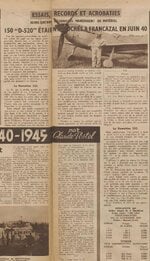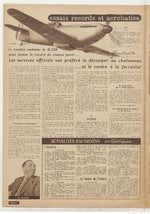- Thread starter
- #41
TM06
Airman 1st Class
The weight of the entire aircraft itself was 300~400 kg lighter than the D.520. Again, I'm unsure on the specific distribution of that weight.300-400 kg? That was probably the weight of the whole wing?
Small wing of the D.550, that also had no support for the tanks and weapons, was lighter by 140 kg than the bigger wing of the D.520 that supported also the tanks and firepower.
Marcel Doret (test pilot of Dewoitine) wrote an article in French about the aircraft, with the statement that "The D.520 was a Percheron while the D.550 was a thoroughbred."
They're a bit hard to read but here's that article.


